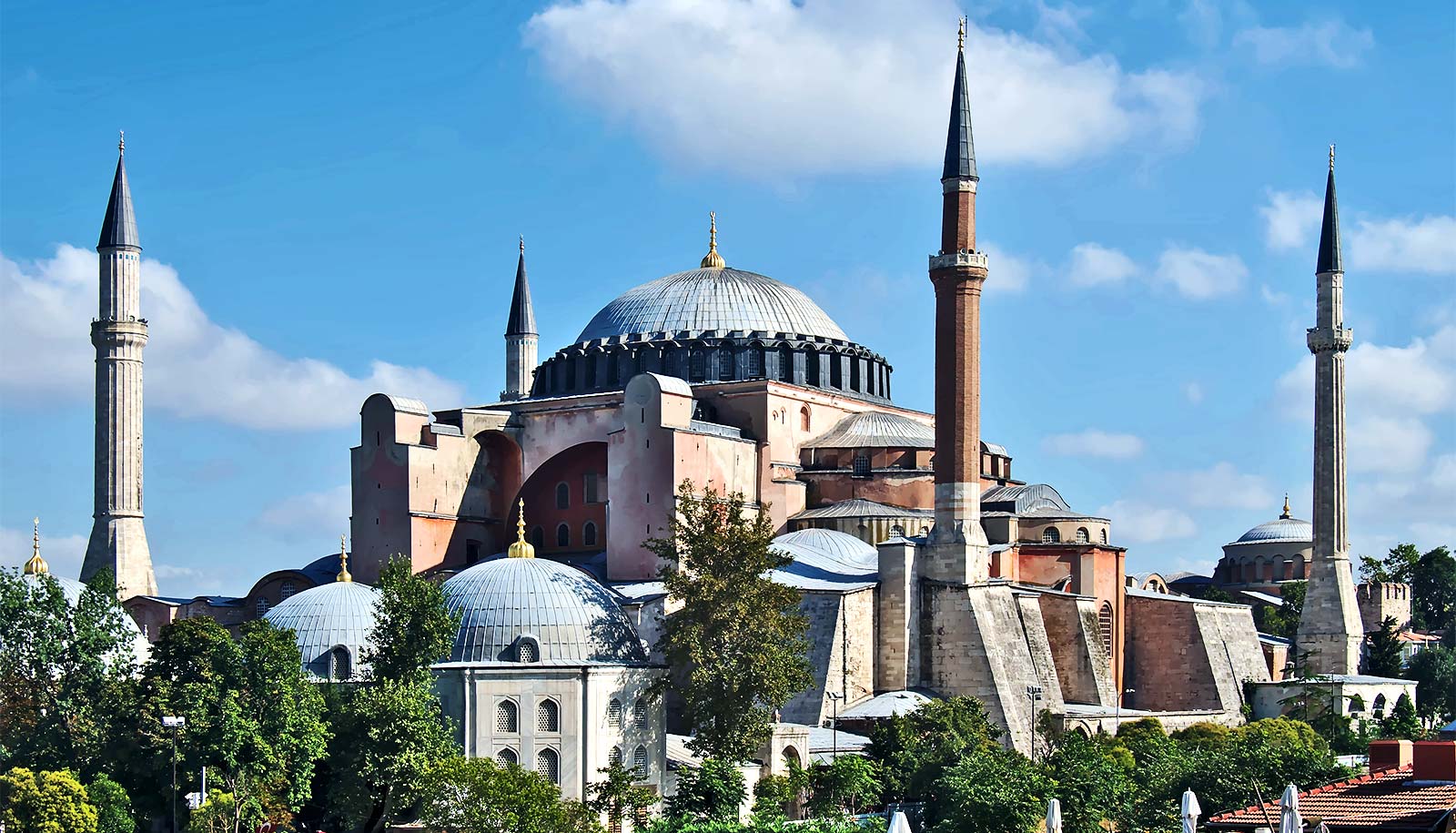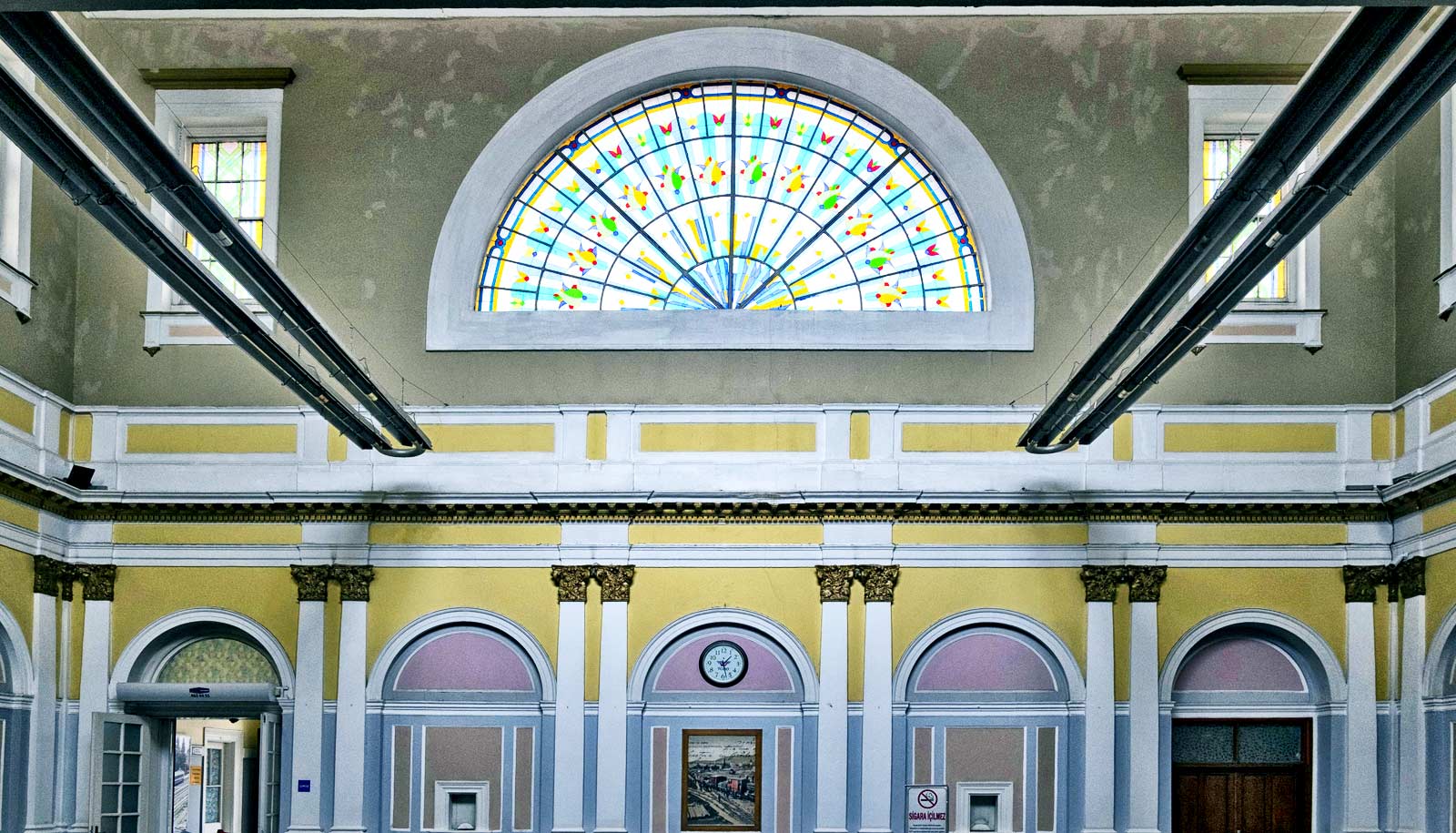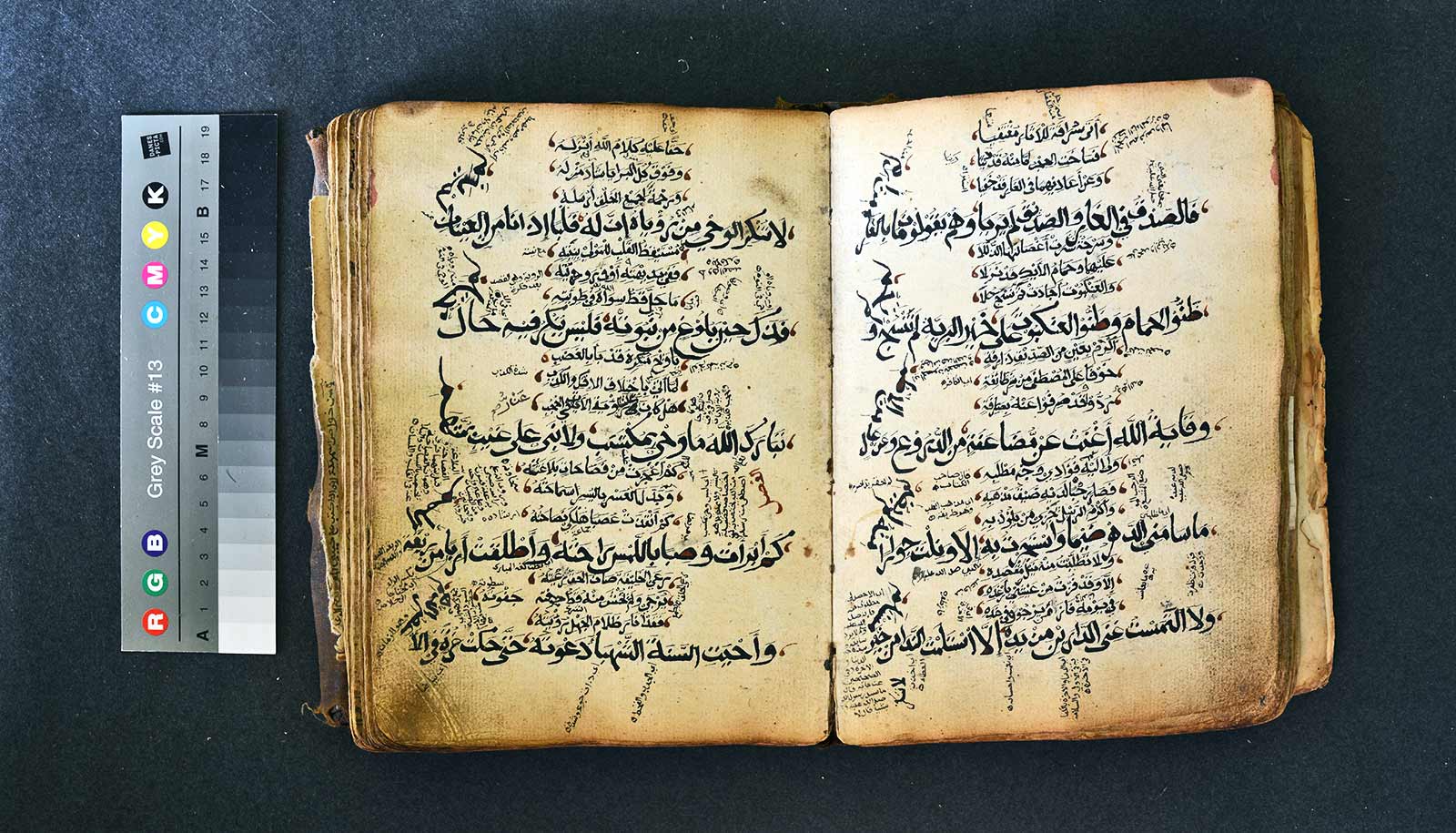Narratives of conquest don’t fully explain the lasting legacy of Hagia Sophia, a cathedral-turned-mosque-turned-museum in Turkey that is once again a mosque, argues historian Ali Yaycıoğlu.
With the conversion last month of the architecturally stunning edifice into a working mosque, Turkish President Recep Erdoğan fulfilled a long-held hope of many Turkish Muslims and of his own political party.
On July 24, for the first time in nearly 90 years, Muslim worshippers prayed together there, as the imam held a sword—a reminder to many of the conquest of the building throughout Turkish history.
The Roman Emperor Justinian built the monumental structure in the sixth century as the world’s largest cathedral. Later, it became the central building of Greek Orthodox Christianity and the Eastern Roman Empire, known as Byzantium.
Hagia Sophia came under Catholic control for a few decades in the 13th century during the Crusades before the Byzantine emperor took Constantinople back.
Then, in 1453 after the Ottoman Empire had gained control, it became a mosque. After the founding of the modern state of Turkey, Hagia Sophia was converted into a museum in 1934.
For Yaycıoğlu, an associate professor of history specializing in the Ottoman Empire and modern Turkey at Stanford University and a native of Ankara, Turkey, conquest narratives—the notion that one conquering group claimed Hagia Sophia from the last and made it fully its own—belie the impact each had upon the other.
Here, Yaycıoğlu discusses the building’s significance:
You have written that the conversion of Hagia Sophia into a mosque has been on the political agenda of Islamist and conservative nationalists in Turkey at least since the 1950s. What are the political and cultural forces at work that allowed the conversion to happen now?
For conservatives, Islamists and conservative nationalists, turning Hagia Sophia into a museum has been seen as a concession to the West, which has deeply hurt pious Muslims. It was, many right-wing thinkers argued, a symbol of self-colonization on the part of the founders of modern Turkey.
For the founders of the Turkish Republic, on the other hand, that decision symbolized a new claim to Turkey’s history; it was a matter of confidence, rather than concession. They thought that they were able to change the status of their most sacred building and transform it into a museum because they had the self-confidence to do this.
I do not mean that the founders of the Turkish Republic equally embraced the entire historical heritage of their lands. They are primarily Turkish nationalists. Still, they intended to establish a new relationship with the history of the land by demystifying the Ottoman imperial and religio-political narrative. The conversion of Hagia Sophia into a museum should be understood within this context.
Yet, we should also see that, whatever the real motivation, the 1934 decision has a universal value. As a result of this decision, Hagia Sophia was appreciated as one of the most important world heritage sites in Turkey and in the world.
Today, the decision to convert it back into a mosque is very political and has to do with President Erdoğan’s diminishing popularity. It seems that Erdoğan thought this step, a demonstration of force to the domestic public and to the world, would help him show that he is still able to make radical decisions despite opposition.
Along with its stunning architecture, the building is also known for its intricate Byzantine mosaics. What is your reaction to the recent decision to cover up the mosaics during prayers?
They will cover the mosaics with curtains during the prayers, which I think is fine as long as they open the curtains at other times. We should know that the Ottomans did not touch the mosaics for centuries. Only in the later period, some of the mosaics were covered but not destroyed. The Ottomans knew the mosaics’ artistic value.
Islamic art historians have shown that there was no widespread iconophobia in the premodern Islamic world. Generally, there are no human figures in mosques, but we also know that the Ottomans were not uncomfortable in Hagia Sophia praying beneath the images of Jesus and Mary.
From the 17th century on, we see that gradually such icons were seen as inappropriate in a mosque. We should note that Islamic culture has a diverse history and that this history is not linear. In the 19th century, we see new interest in the mosaics in Hagia Sophia. At the same time, we need to study how the Christian Orthodox community in Istanbul and elsewhere in the empire perceived Hagia Sophia throughout the Ottoman centuries.
Throughout history, each conquering group has claimed Hagia Sophia. Is becoming a mosque again the latest chapter in this conquest narrative?
No, it is not. In fact, Hagia Sophia continued to shape the Ottomans’ way of seeing themselves and the history of their capital throughout centuries. It was almost a time tunnel for them, linking them with the Roman and Byzantine worlds.
They studied its history from Greek sources and connected it to symbols and notables of the Islamic traditions, which included Quranic and biblical prophets who came before Muhammad, such as Solomon, Noah, and John the Baptist.
The building itself served as a kind of link between cultures. It was the symbol of the Roman political tradition. Ottoman sultans claimed to be not just sultans but also Caesar—a Roman emperor—and Hagia Sophia symbolized this Roman-Ottoman universal sovereignty.
In other words, the Ottomans redefined Hagia Sophia for their own spiritual tradition, or perhaps better put, their spiritual tradition was redefined by Hagia Sophia.
In the 17th and 18th centuries, it continued to play important roles as a sacred-political space. I think we can say that Hagia Sophia was the most important building in the Ottoman Empire, along with the Kaaba in Mecca and the Dome of the Rock in Jerusalem.
How do conquest theories explain or fail to explain the significance of Hagia Sophia both in Turkey and for people all over the world?
Conquest was important for the Ottomans. It signified the incorporation of existing social, spiritual, and material realities into the new regime. It did not simply mean erasing existing realities and building anew but constructing new relationships between past and present.
The Ottomans were transformed by their own conquests, while transforming the lands they had conquered. Hagia Sophia is one of the best examples. The Ottomans changed Hagia Sophia, and they were changed by it. They converted the building into a mosque and symbol of imperial power, and yet their entire notion of imperial architecture was shaped by Hagia Sophia. Even in today’s Turkey, mosque architecture is often based on Hagia Sophia, with a large central dome.
Today in Turkey, the Ottoman conquests, particularly of Constantinople, are seen in terms of a triumphalist narrative: “The Ottomans came, defeated the Byzantine Empire, and built a new civilization from scratch.” But this narrative cannot explain why Hagia Sophia is so important.
In contrast, in the West, the popular perception of the Ottoman conquests in the 14th through 16th centuries is that they were brutal and destructive. But this perspective also fails to see that the Ottoman Empire was a product of early modern rather than medieval realities and also fails to appreciate how the Ottomans gave a new meaning to Hagia Sophia, by incorporating its historical significance.
As a historian, what do you see as the most desirable way to maintain and preserve the building’s rich religious and cultural histories?
I love Hagia Sophia. And this love is not a religious love. I love it because it is so beautiful, but also it has dizzying historical, emotional, cosmological, and spiritual layers. These are all entangled, not necessarily in hierarchical and chronological order.
It is an almost timeless building, incorporating elements of the last 1,500 years within its space. I would have preferred if Hagia Sophia remained a museum. But, frankly, the museum did not do this building justice either. It was a dry museum. There was no way to hear the building’s mesmerizing acoustics.
This became even clearer to me after I was able to attend a concert by Cappella Romana at Stanford, in collaboration with my Stanford colleague Bissera Pentcheva, professor of art and art history, based on her research on Hagia Sophia’s amazing soundscape.
Now it is a mosque and there is no possibility to change this status in the near future. So, first, it’s important to think about how we can protect the building. Second, let us think about how it might also function as a mosque-museum. We have to find ways for curating Hagia Sophia, not just as a museum but also as a functioning spiritual center with a diverse and contested history.
Hagia Sophia should function as a monument to unite people, instead of dividing them.
Source: Stanford University



